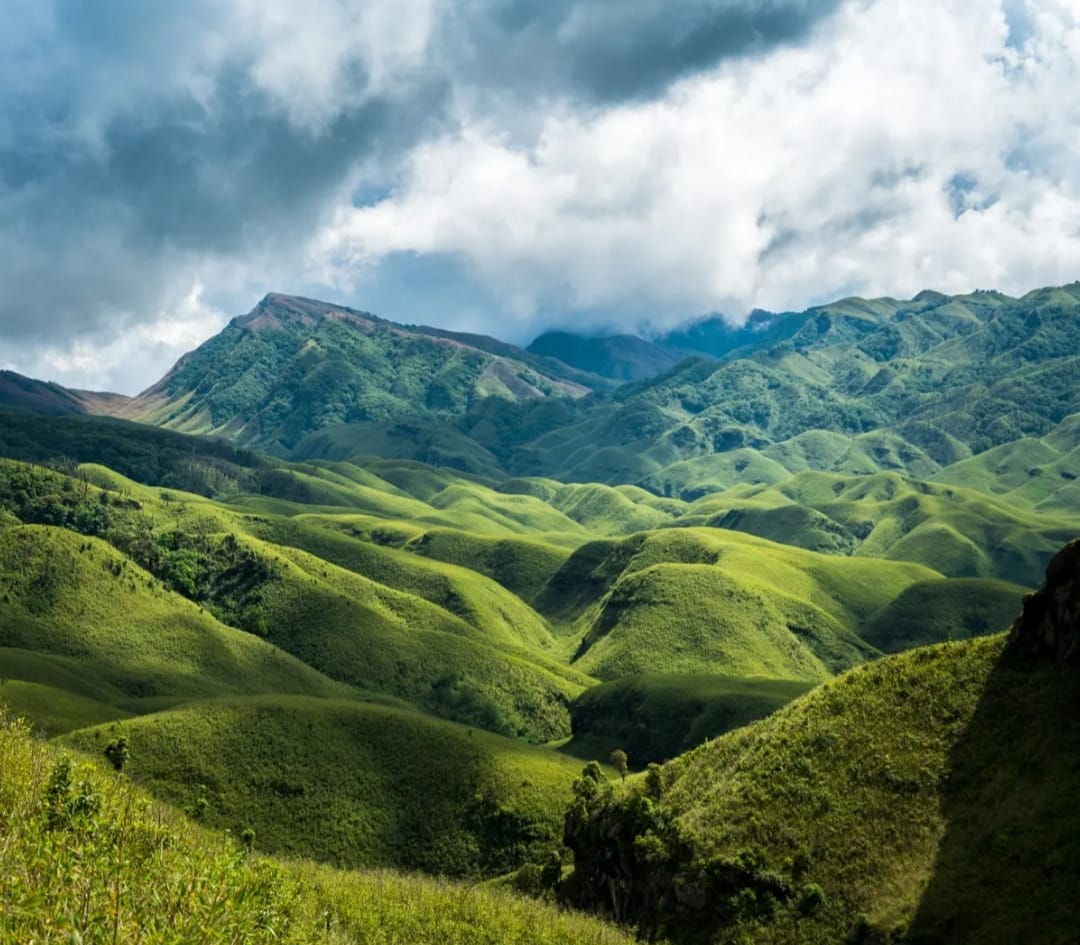When the monsoons leave South India, the hill stations in South India that turn magical after the monsoons come alive with lush green valleys, gushing waterfalls, and mist-covered hills. These hill stations in South India that turn magical after the monsoons offer the perfect blend of cool weather, clear skies, and breathtaking views. From Munnar’s tea gardens to Coorg’s spice farms, each destination becomes a paradise after the rains.
After the rains, the flowers bloom brighter, the air carries the sweet fragrance of spices, and lakes sparkle under the sunlight. Whether you want to relax, trek, or enjoy nature’s beauty away from the city’s hustle, these hill stations are perfect. Here are 6 hill stations in South India that turn magical after the monsoons.
1. Munnar, Kerala

Munnar is a breathtaking hill station nestled in Kerala’s Western Ghats. After the monsoon, it becomes even more enchanting with lush green tea plantations and mist-covered hills. Waterfalls, rivers, and lakes sparkle with fresh rainwater. Popular spots like Mattupetty Dam, Eravikulam National Park, and Attukad Falls are at their best during this season. The cool air carries the aroma of fresh tea, and trekking trails offer stunning views of valleys surrounded by clouds. A visit to Munnar after the monsoons promises unforgettable natural beauty and tranquility.
2. Coorg, Karnataka

Known as the “Scotland of India,” Coorg is famous for its coffee plantations, spice farms, and rolling green hills. After the monsoons, the landscape looks refreshed and vibrant. Waterfalls like Abbey Falls and Iruppu Falls gush with renewed force, making a spectacular sight. The foggy valleys and cool breeze create a peaceful atmosphere. Trekking to Tadiyandamol Peak and Brahmagiri Hills offers amazing views. Don’t miss the Dubare Elephant Camp and Raja Seat for unique experiences. Coorg’s magic after the rains is something every traveler should witness.
3. Kodaikanal, Tamil Nadu

Kodaikanal, called the “Princess of Hill Stations,” becomes even more magical after the monsoon rains. The lush green valleys and mist-covered hills come alive with vibrant flowers and waterfalls like Silver Cascade and Bear Shola flowing in full strength. Kodaikanal Lake reflects the beauty of its surroundings perfectly. The weather is cool and perfect for boating, trekking, and exploring hidden trails. Whether enjoying hot coffee or walking through pine forests, Kodaikanal after the rains will stay in your heart forever.
4. Agumbe, Karnataka

Agumbe is known as the “Cherrapunji of the South” for its heavy rainfall. After the monsoons, this Western Ghats hill station turns into a green paradise with thick forests, flowing rivers, and spectacular waterfalls like Barkana Falls and Onake Abbi Falls. The melodious sounds of waterfalls and the mist-covered hills soothe the soul. Agumbe is also home to rare species such as the King Cobra. Its famous sunsets overlooking the Arabian Sea add to the magical experience.
5. Paithalmala, Kerala

Situated in the Kannur district at about 4,500 feet altitude, Paithalmala is a hidden gem in the Western Ghats. After the monsoons, its meadows turn lush green, wildflowers bloom, and clear streams flow freely. Trekking here offers panoramic views of surrounding mountains, forests, and even Coorg. Walking the green hilltops and soaking in the calm atmosphere makes Paithalmala a magical escape for nature lovers after the rains.
6. Vagamon, Kerala

Vagamon becomes a tranquil and magical hill station after the monsoon rains. The tea gardens glisten with raindrops, and the valleys are wrapped in mist. Cool breezes make it a refreshing retreat from the heat. Waterfalls and rivers flow faster, adding to the scenic beauty. Vagamon is perfect for trekking, paragliding, and camping after the monsoons. Whether visiting for romance or solitude, Vagamon offers a peaceful and magical experience.
Frequently Asked Questions (FAQs)
1. When is the best time to visit these South Indian hill stations after the monsoons?
The best time is just after the monsoon season, from September to November. The hills are lush, waterfalls are full, and weather is cool and pleasant.
2. Are these hill stations safe to visit right after the monsoons?
Generally yes, but check local weather and road conditions, as landslides or slippery trails can occur right after heavy rains.
3. What activities can I enjoy at these hill stations after the monsoons?
You can enjoy trekking, nature walks, boating, visiting waterfalls, photography, and relaxing in the serene environment.
4. Which hill station is best known for coffee plantations and spice farms?
Coorg in Karnataka is famous for its coffee and spice plantations, which become more vibrant after the monsoons.
5. Why is Agumbe called the “Cherrapunji of the South”?
Because it receives one of India’s highest rainfalls, similar to Cherrapunji, creating lush forests and numerous waterfalls.



